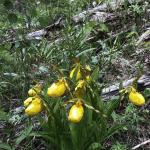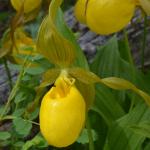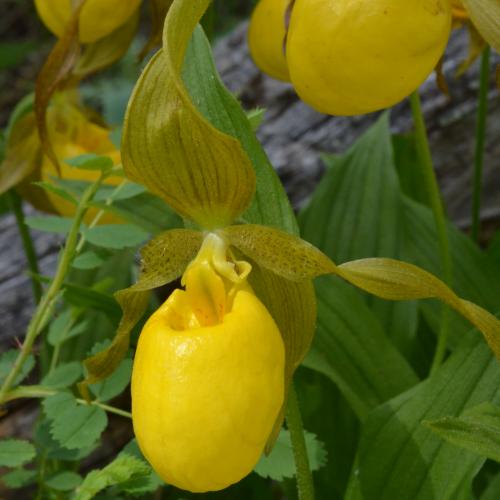Cypripedium parviflorum var. pubescens (Yellow Lady's-Slipper)
Cypripedium calceolus var. planipetalum (Fern.) Victorin & Rouss., Cypripedium calceolus var. pubescens (Willd.) Correll, Cypripedium furcatum Raf., Cypripedium parviflorum var. planipetalum Fernald, Cypripedium planipetalum (Fern.) Morris & Eames, Cypripedium pubescens Willd., Cypripedium pubescens var. pubescens
| USFWS | State of NM | USFS | BLM | Navajo Nation | State Rank | Global Rank | R-E-D Code | NMRPTC Status | Strategy Status |
|---|---|---|---|---|---|---|---|---|---|
| E | SEN | S2? | G5T5 | D | SS |
| Overall Conservation Status | Documented Threats | Actions Needed |
|---|---|---|
| EFFECTIVELY CONSERVED | No Information |
Status surveys on abundance, distribution and threats |
Herbaceous perennials to 1 m tall or more, stems erect. Leaves: Alternate, usually 3-5, orbiculate to broadly ovate or oblanceolate to elliptic-lanceolate, 8-21 cm long and 1.5-12 cm wide, erect to spreading, proximal or more evenly spaced along the stem. Flowers: Flowers bright yellow, large and showy, with a protruding lower lip petal and 3 large, lanceolate bracts with one top bract and 2 side bracts on either side of the lower lip, the lip yellow or rarely white, oblanceolate-ovoid or subglobose, 20-54 mm long, the throats 10-27 mm wide, the distal most bract (and often the next) with the underside sheathing and densely and conspicuously silvery-pubescent when young, later sometimes becoming glabrescent, sepals 19-80 mm long and spreading wide, commonly spotted, striped, and reticulately marked with reddish brown or madder, rarely extensively blotched or wholly unmarked, staminodes cordiform-ovoid, deltoid, lance-ovoid, or ovoid-oblong, flowers borne in groups of 1-2, with a moderate to faint, rose or musty scent. Fruits: capsules dehiscing by longitudinal slits. Seeds numerous, minute. Flowering late May to early July.
This is the largest orchid in NM. There are no other Cypripediums in NM.
Newfoundland to British-Columbia, south to Georgia, Arizona, and Washington; Europe. In New Mexico sporadic in moist conifer forests, at elevations between 5,750 and 11,000 ft.
Mesic deciduous and coniferous forest, openings, thickets, prairies, meadows, fens.
The overall conservation status of 'effectively conserved' is questionable in the absence of population status and trend data. The population in San Juan County on the Navajo Nation has apparently gone extinct.
For distribution maps and more information, visit Natural Heritage New Mexico



